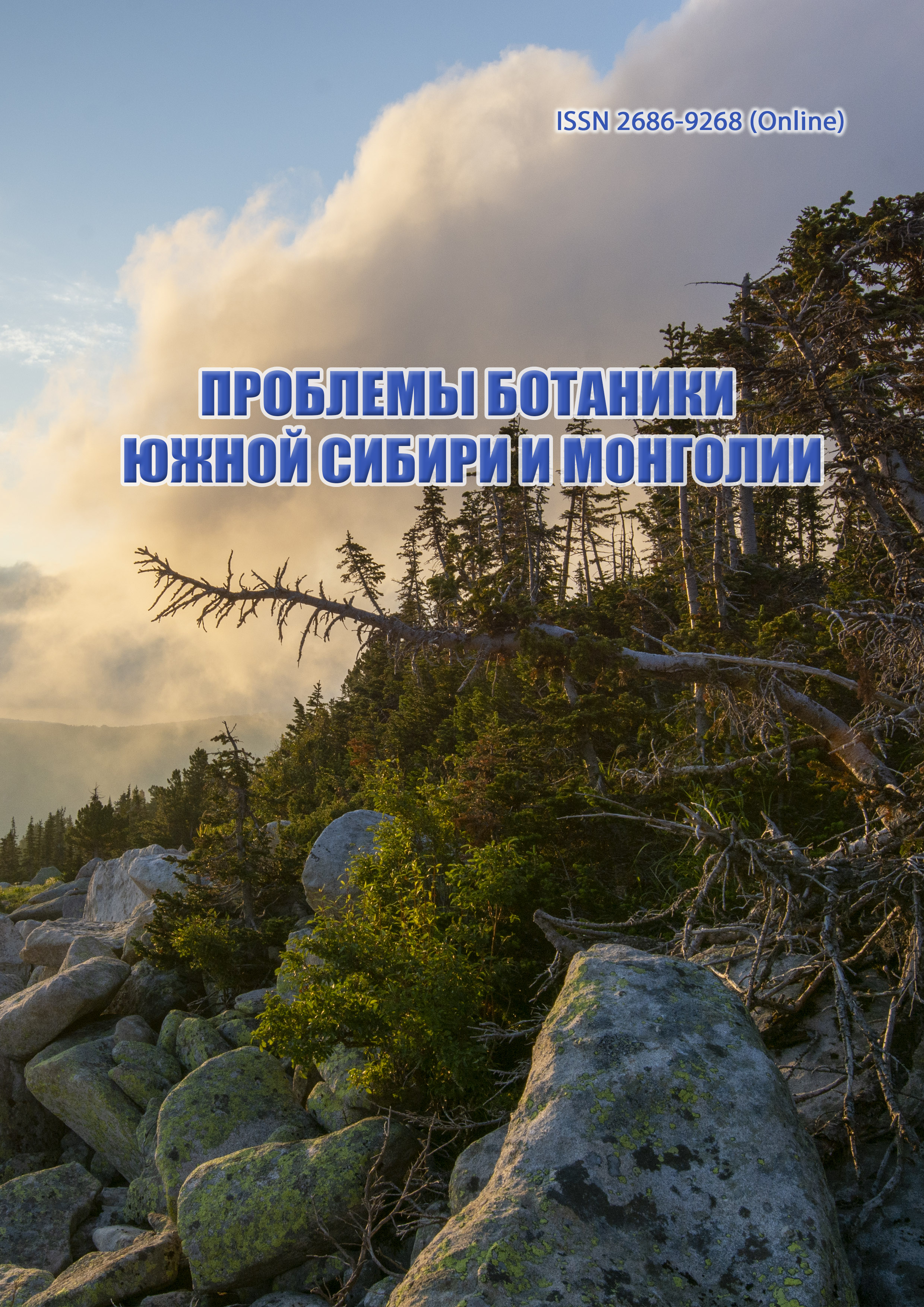Vascular plants– phyto-indicators of geoactive zones in mountains and plains
УДК 582.47:630*165: 630*5(470.53):551.24
DOI:
https://doi.org/10.14258/pbssm.2021075Keywords:
Geoactive zones, forest stand, neotectonics, ring structures, vegetationAbstract
The research was conducted in the Perm Region. Geo-structural analysis, phyto-indication, and biolocationwere used. Prior to this, forest ecosystems were studied by classical methods, in which it was found that the combinedinfluence of the density of microcenosis and the tree genotype determines the size of trees by only 40 %. It follows that 60%of the factors that determine the size of trees in different phytocenotic and soil conditions remain unknown. Therefore,we then began to study small geoactive zones (MGA-zones) with the hypothesis that they are related to the “small ringstructures of loose deposits of the earth’s crust” by Yu. I. Fivensky. Favorable MGA zones with a size of 1.0-3.0 m are foundwith a frequency of 220-250 pcs./ha and the pine tree is preserved 39 times better, increases the trunk volume by 46 %,forms 200-year-old forests, and its large trees are their indicators. Networks of them can be used as an energy frameworkand, for example, in a forest nursery, their energy in the conditions of cold spring increased the germination of spruceseeds by 7 times. Apparently, the forest species evolved using the energies of these zones; in any case, all the tree species westudied significantly increased their longevity and size. It shows promising sites with structures of Yu. I. Fivensky, whererings of hellebore (Verátrum lobeliánum Bernh.), fern (Dryopteris filix mas L.), and the highest trees of Siberian spruce(Picea obovate Leded) were previously discovered for the first time.) and Siberian cedar pine (Pinus sibirica Du Tour).
Downloads
References
Дурандин А. В. Структурно-тектоничский анализ данных дистанционного зондирования Земли // Геоматика, 2011. – № 1. – С. 48–51.
Копылов И. С. Линеаментно-геодинамический анализ Пермского Урала и Приуралья // Современные проблемы науки и образования, 2012. – № 6. – С. 616.
Копылов И. С. Геоэкологическая роль геодинамических активных зон // Международный журнал прикладных и фундаментальных исследований, 2014. –№ 7. – С. 67–71.
Рогозин М. В. Лесные экосистемы и геобиологические сети. –Пермь: ПГНИУ. 2016. – 171 с.
Рогозин М. В. Структура древостоев: конкуренция или партнерство? –Пермь: ПГНИУ, 2019. – 223 с.
Рогозин М. В., Михалев В. В., Рыбальченко А. Я. Лесные экосистемы и факторы неотектоники. – Пермь: ПГНИУ, 2020. – 249 с.
Рыбальченко А. Я., Рыбальченко Т. М., Силаев В. И. Теоретические основы прогнозирования и поисков коренных месторождений алмазов туффизитового типа // Известия Коми научного центра УрО РАН, 2011. –№ 1 (5). –С. 54–66.
Сукачев В.Н. О внутривидовых и межвидовых взаимоотношениях среди растений // Сообщения института леса. – М.: АН СССР, 1953. – Вып. 1. – С. 5–44.
Марченко И. С. Биополе лесных экосистем. – Брянск: БГИТА,1995. – 188 с.
Усольцев В. А. Продукционные показатели и конкурентные отношения деревьев. Исследование зависимостей. – Екатеринбург: УГЛТУ, 2013. – 556 с.
Фивенский Ю. И. Малые кольцевые структуры рыхлых отложений земной коры / Научное открытие. – Диплом ОТП РАН № 02-д/02 от 22.10.2002.
Фивенский Ю. И. Использование материалов аэрокосмических съёмок для изучения земной коры // Геодезия и картография, 2006. – № 1. – С. 44–52.
Фивенский Ю. И. Инвариантность феномена малых кольцевых структур по отношению к физической среде рекреационной системы // Труды II Международной научно-практической конференции «Туризм и рекреация». – М.: РИБ «Турист», 2007. – С. 115–120.
Чадаев М. С., Гершанок В. А., Гершанок Л. А., Копылов И. С., Коноплев А. В. Гравиметрия, магнитометрия, геоморфология и их параметрические связи. – Пермь: ПГНИУ, 2012. – 92 с.

